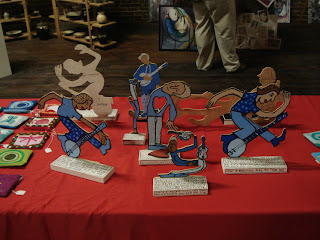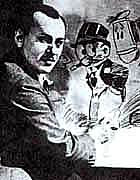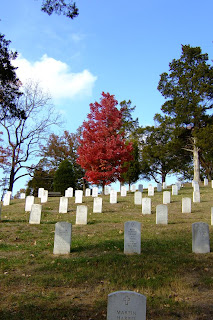
Got another one for you ladies and gents - a great book from the University of Kentucky Press entitled The Shawnee. Which is, of course, relatively self-explanatory, isn't it?
Well, actually, probably not. Tell you what - let's do an exercise. Grab a piece of paper (perhaps yellow, ruled, and legal-sized and two pens - one black, one red. With the red pen write the names of all the native American nations you can think of. Then, with the black pen, write every nation-specific fact you can think of, perhaps underneath each nation, perhaps beside them, perhaps elsewhere connected by little lines and/or squiggles. Now, the odds are, especially if you're from east of the Mississippi in North America, that one of the tribes you named was the Shawnee. And, odds are, you had no more than two or three facts you could write about them. Interesting, eh? [Outliers are to be rewarded with no more than three and no less than one cool point per point of information known about the Shawnee exceeding four - trained anthropologists, sociologists, or historians are excluded from cool point distribution unless they drew some really awesome robots, monsters, cartoon figures, or jet planes on their paper.]
I have a theory about why this is. Specifically, this is a product of the fact that among the eastern native American nations only two divisions have made it into our popular lore (read as "high school history books") on a large scale level. In the northeast lived one of these two groups, the Iroquois (alternatively known as the "League of Peace and Power", the "Five Nations", the "Six Nations", the "People of the Long house", and, most properly if the truth is told, the Haudenosaunee). Their immortality would be guaranteed to the Haudenosaunee largely because of their federation's size, on the one hand, and on the fact that their political arrangement was not only preserved, but may have inspired key aspects of the United States of America's constitution. The other major group of eastern native Americans generally remembered are the nations generally classified as the "Five Civilized Tribes." These tribes, the Cherokee, Choctaw, Chickasaw, Creek, and Seminole, lived in the southeastern United States originally, but, while sharing some cultural traits (particularly activistic policies of adopting key political, economic, and social goods from their neighbors of European and African descent), survive in our modern memories largely as a product of their deportation to the American West, even after they had demonstrated a willingness to integrate into the American political-economy - a historical moment aptly known as the Trail of Tears.
Now, let me reiterate - I'm not saying the facts that I've listed are the most important facts surviving on these groups, or that they are unusually important amongst native American nations. Rather, I am trying to sketch out the limits of our knowledge on the average.
That said, look at your list. Certainly you listed the Shawnee people, their name written in red. Perhaps you even know a few key facts about their geography (for instance, since I'm writing about them here, the Appalachian Mountains made up a key part of their former territory). Heck, I'm with you on that (or was before the book I promise I'm about to review). But what else?
Let me see if I can help by listing some key facts for you that the good Dr. Jerry E. Clark compiled into his excellent work The Shawnee.
1 - The primary territory of the Shawnee people at its greatest known extent, which often overlapped with that of other nations, included most of Pennsylvania and Ohio, as well as the western line of the Appalachian chain (and its western plateaus). They also had other, far-flung towns, notably along the Savannah River in South Carolina and Georgia and made frequent use of the mountains of West Virginia, Virginia, and Kentucky as hunting territories (as did many of the regional native American tribes in the period immediately before and following European settlement of the Americas. This latter bit is deeply interesting to me . . . let me quote a bit of Clark's work for you:
One reason for the apparent inconsistencies may lie in the lack of understanding of the Shawnee people by the whites in the early period. The Shawnee were nomadic at least part of the year, when they moved their small family settlements in pursuit of game. They considered the land free to be used by any Indian group who had need of it. In the summer they settled in rather large villages where they raised crops of corn, beans, and squash. Smaller family bands moved regularly in the winter and established rather impermanent settlements as they hunted deer, bison, and other meat- and hide-producing animals. Though Kentucky was a favored hunting area for the Shawnee, the lack of permanent year-round villages may have given the false impression that the region was not occupied by the Shawnee.
After American independence, most of the identified summer villages were located north of the Ohio River. but the Shawnee also considered Kentucky as their own. In 1769 a group of Shawnee had warned Daniel Boone to leave Kentucky, because it belonged to them. When he did not obey, it cost Boone the life of a son. So Kentucky was occupied, perhaps not in the sense of being secured by European-style settlements and towns, but frequented by a group of Indians who used it and called it their own. (2-3)
Ah, in other words, the Shawnee were employing a communitarian variation of John Locke's theory of initial capital formation - to work and use a good is to own that good; unused goods are unowned goods - in a form that presages the use of our national and state parks by centuries. Groovy, eh?
2 - To quote again:
Linguistically the Shawnee were identifiable with the group of Central Algonquian speakers including the Miami, Kickapoo, Illiniwek, and Sauk and Fox, among others. (5)
3 - And on the subject of languages, there is the question of names. . . .
Early historic references to the Shawnee also raise problems of identification. Since the term "Shawnee" means southerner , it may have been applied to many Algonquian and non-Algonquian speakers existing south of the main body. (8)
Okay, okay. . . hold on. I find myself on the verge of quoting everything in my heavily dog-eared copy of
The Shawnee. I just want to tell you there is soooooo much information here - a tremendous description of the social and political organization of the Shawnee, a very good description of their religious structure, and a tremendous description of the conflicts and associations between the Shawnee and the descendants of the various European nations who colonized the continent, noting in particular the Shawnee's fervent efforts to preserve their traditional culture and territory (and to lead other nations' attempts to do so). Indeed, Clark makes it pretty clear that the Shawnee were as much master diplomats as warriors, developing into a unique role as a buffer people for such nations as widely dispersed as the Cherokee, the Creek, the Delaware, the Miami, and the Wyandot - oh, and in post-Columbian America, the French, the Spanish, and the Texans. Perhaps the one thing I craved more data on but wasn't rewarded with was their confederacy of the late 1700s with the Delaware, Wyandot, Miami, Ottawa, Chippewa, and Mingo, formed specifically to force American settlers from Ohio and Kentucky, specifically on the structures and institutions of the confederacy - though I suppose it was highly likely this data is lost in time or at least highly dispersed.
Okay, all that said, great book, great read. Too few works exist on (unjustly) lesser known nations such as the Shawnee that are suitable for novices to the subject like myself, but this is one of 'm. I haven't done it justice here, I know, but if you're interested in native Americans in general or the pre-modern history of the Appalachians in general, well, this is one for you. Check out the University of Kentucky Press site
here to order - I'll bet you can still get it for Christmas. Still not sure you're interested enough? Well, that's natural enough. . . dig on this entry from
The Tennessee Encyclopedia of History and Culture on the Shawnee.
Et cetera.
 New tunes only slowly made their way into the area, often by visitors or because a community member made a trip outside of his locality. Even so, as a tune bounced back and forth over the mountains between North Carolina and Virginia, local musicians might give it a different name, speed it up, add a new twist, and come up with a 'souped-up' version.
New tunes only slowly made their way into the area, often by visitors or because a community member made a trip outside of his locality. Even so, as a tune bounced back and forth over the mountains between North Carolina and Virginia, local musicians might give it a different name, speed it up, add a new twist, and come up with a 'souped-up' version. 





















































